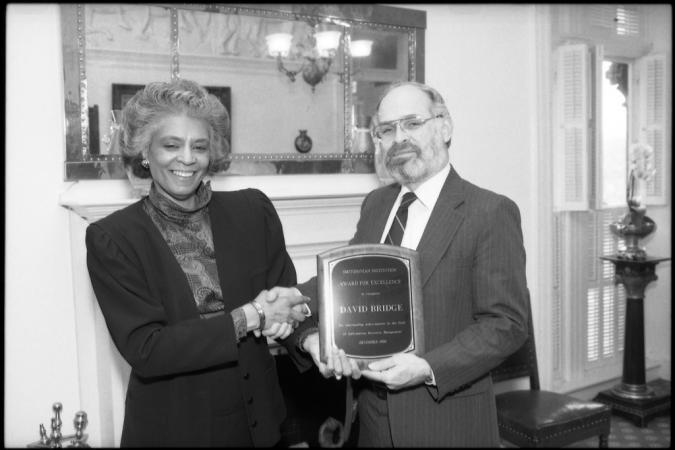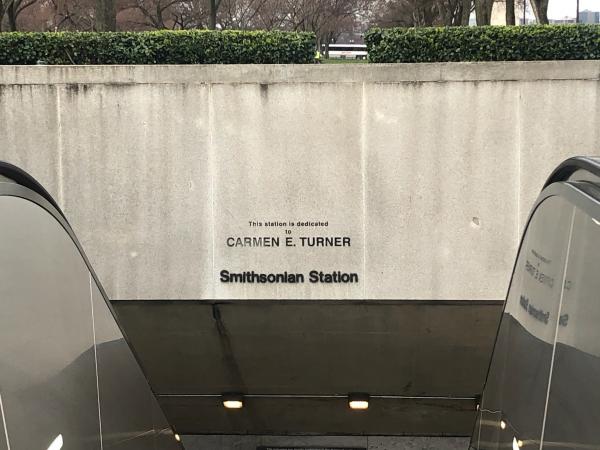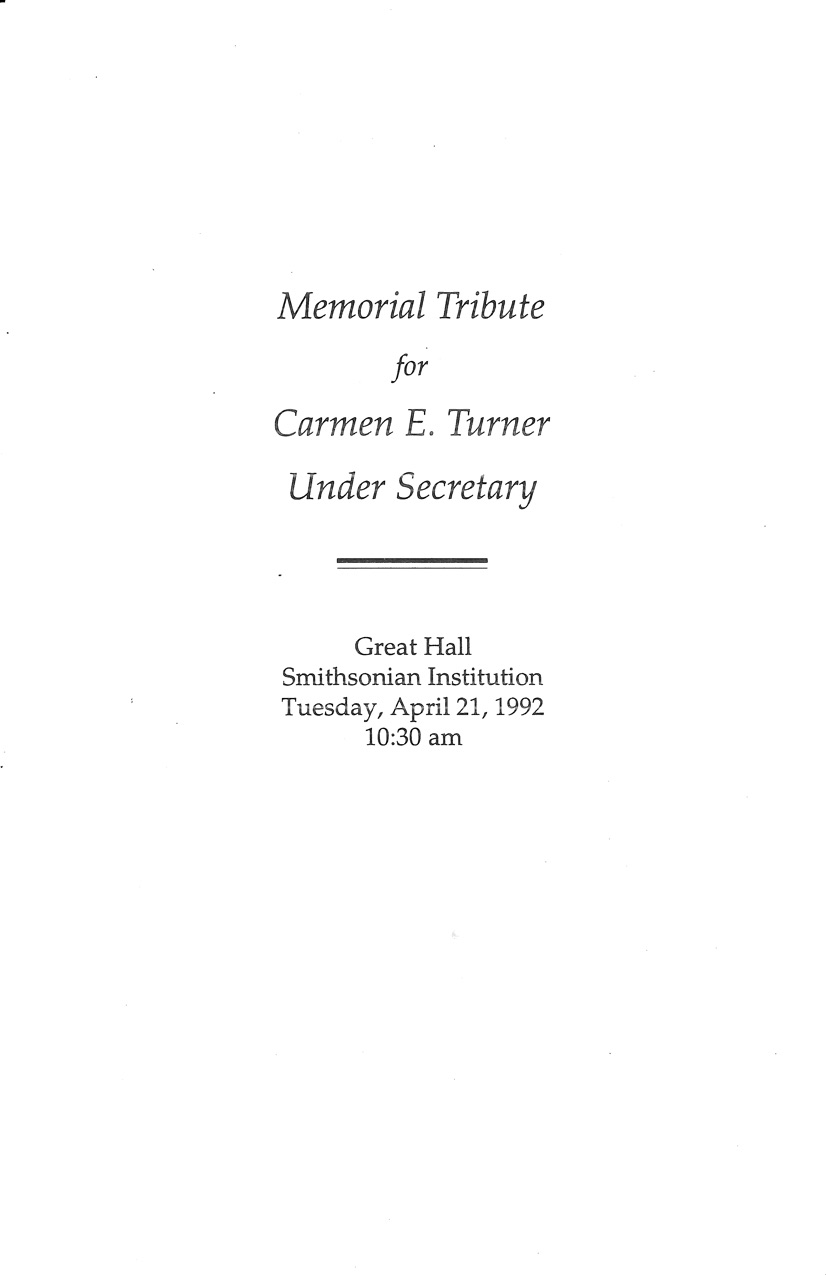She skyrocketed from working as a GS-2 clerk typist to becoming the general manager of the Washington Metropolitan Area Transit Authority (WMATA). And, if that wasn’t enough, she made one final stop as second-in-command at the Smithsonian.

Carmen E. Turner was born in New Jersey in 1931, but, by third grade, moved to the District of Columbia. She attended Dunbar High School before earning a bachelor's degree in government from Howard University in 1968 and a master’s degree in public administration from American University in 1972.
Prior to her successes in the top role at WMATA, Turner worked on civil rights and equal opportunity programs for the Department of Transportation between 1970 and 1977. Of her performance, then-Secretary of Transportation William Coleman Jr. praised, “She understands human beings. It’s the key to her effectiveness.”
And those successes kept coming when Turner began working for WMATA as chief of administration, and, beginning in 1983, as its general manager.
During her seven-year tenure with the organization, Turner skillfully navigated political and financial obstacles and expanded Metro from forty-two miles and forty-seven stations to seventy-three miles and sixty-three stations.
As the first African American woman to head a major urban transit system, Turner had a lot to prove. But she exceeded all expectations and was consistently recognized for her triumphs. The American Public Transit Association awarded Turner with the Transit Manager of the Year distinction in 1989, and Washingtonian named her Washingtonian of the Year in 1986.
Once again, her leadership style was praised. Washington Post writer Bart Barnes concluded, “Her style of operating was said to be warm, charming and non-confrontational, but she also demanded answers and solutions whenever anything went wrong.”
This fairness and warmth did not go unrecognized by Smithsonian leadership when a vacancy arose in the role of Under Secretary, tasked with day-to-day operations. In explaining his choice in Turner at a press conference on October 3, 1990, Smithsonian Secretary Robert McCormick Adams emphasized her great relationship with WMATA staff. He recalled being particularly impressed by an anecdote Turner shared about knowing she was succeeding when Metrobus drivers recognized her and stopped to wave.
And though Turner described leaving WMATA as “wrenching” and unexpected, she felt an instinct that this role at the Smithsonian was the right next move. She explained:
The Smithsonian, for all of us who live in Washington, is a very important part of our total experience. I can remember coming to the Smithsonian as a child with my parents, coming with my two sons after church and much later with my two little granddaughters. I feel very warmly about the Smithsonian.
All parties were hopeful about this new era of leadership. However, after a sudden battle with breast cancer, Turner passed away on April 9, 1992, at age 61.
Still, in such a short period, Turner made a lasting impact. She conducted a comprehensive reorganizational study of the Smithsonian, fought for equal opportunity programs, prioritized attracting more culturally diverse audiences, and worked to make more welcoming spaces for teenagers.
Thousands gathered at the Washington National Cathedral to celebrate her life, and the Smithsonian hosted a private memorial in the Smithsonian Institution Building that spilled into the nearby Enid A. Haupt Garden.
Only two years prior, Turner and Secretary Adams strolled through that garden discussing the excitement of her appointment with the press, when Adams quipped, “And just like our millions of visitors, Carmen knows her trip to the Smithsonian will be an easy one. She can always take the Metro.”
On May 12, 1995, WMATA dedicated a memorial in Turner’s memory at the Smithsonian Metro station.

Related Collections:
- Smithsonian Institution, Office of Special Events and Conference Services, Event Files, 1990-1993, Accession 99-101, Smithsonian Institution Archives, Box 8, Folder: 4/21/1992 - Memorial Service for Carmen Turner.
- “Carmen Turner Names Undersecretary,”by Madeleine Jacobs, Torch, November 1990, Smithsonian Institution Archives.
- “SI Mourns Carmen Turner,” by Madeleine Jacobs, Torch, May 1992, Smithsonian Institution Archives.
Related Resources:
- “On the Move with Carmen Turner,” Washington Post, 4 October 1990.
- “Carmen Turner Dies; Directed Metro’s Growth; She Later Took Post at the Smithsonian,” by Bart Barnes, Washington Post, 10 April 1992.
- “In Recognition of Carmen Turner,” by the Honorable Frank R. Wolf, 19 May 1995, Congressional Record
- Nicholson, Dolores, “Carmen Pawley Turner (1931-1992)” in Notable Black American Women: Book II, ed. Jessie Carney Smith (Detroit: Gale Research Inc., 1996), 659-661.
Produced by the Smithsonian Institution Archives. For copyright questions, please see the Terms of Use.




Leave a Comment